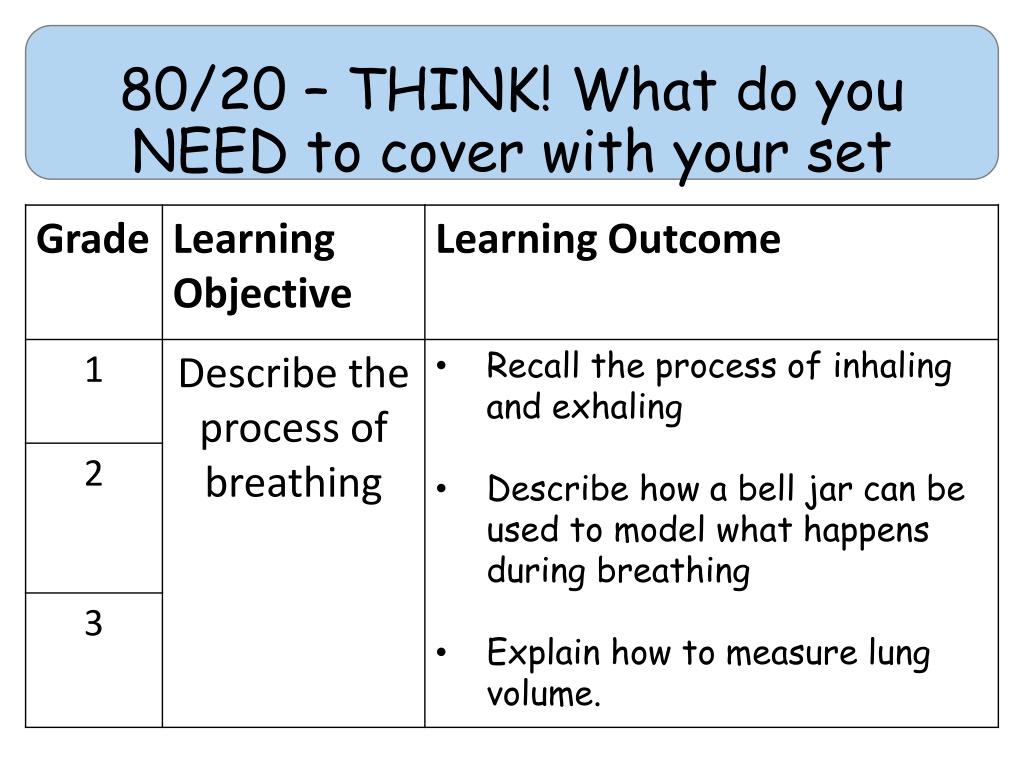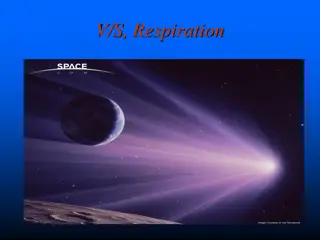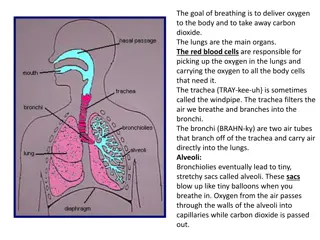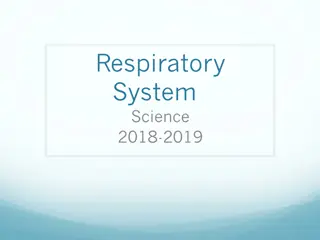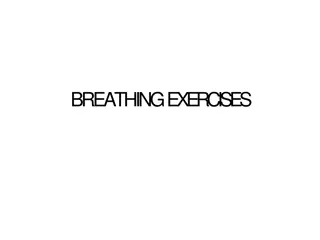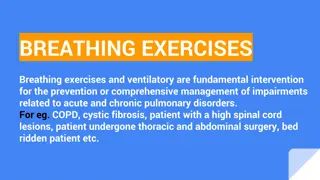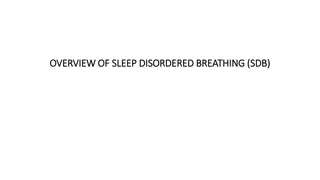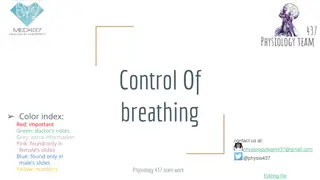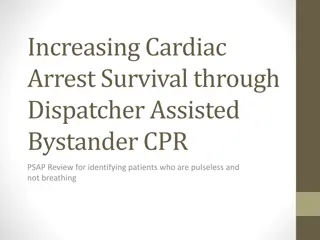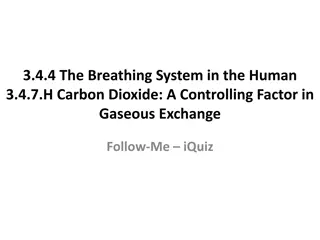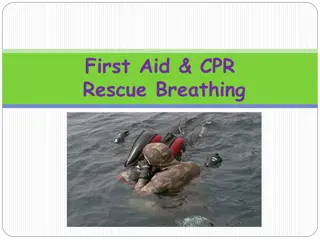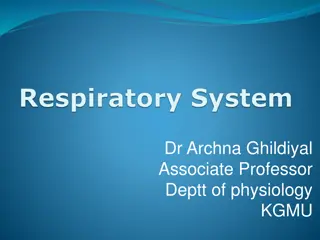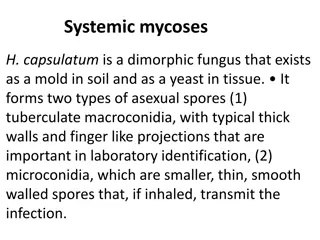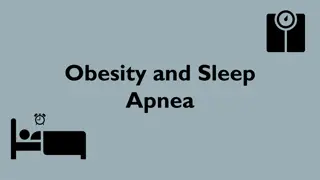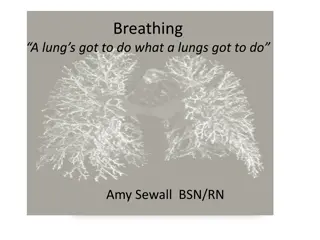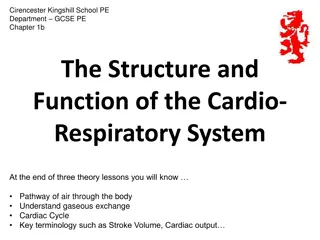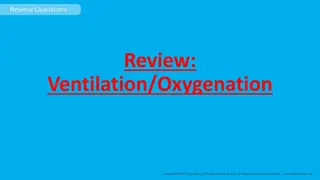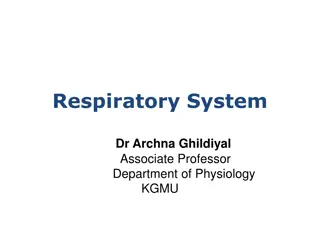Understanding the Process of Breathing: Inhaling and Exhaling Explained
Explore the intricate process of breathing, from inhaling to exhaling. Discover how the respiratory system works, model breathing using a bell jar, measure lung volume, and assess your understanding through engaging activities and assessments.
- Breathing process
- Respiratory system
- Lung volume measurement
- Inhaling and exhaling
- Learning activities
Download Presentation

Please find below an Image/Link to download the presentation.
The content on the website is provided AS IS for your information and personal use only. It may not be sold, licensed, or shared on other websites without obtaining consent from the author. Download presentation by click this link. If you encounter any issues during the download, it is possible that the publisher has removed the file from their server.
E N D
Presentation Transcript
80/20 THINK! What do you NEED to cover with your set Grade Learning Objective Learning Outcome Recall the process of inhaling and exhaling 1 Describe the process of breathing 2 Describe how a bell jar can be used to model what happens during breathing 3 Explain how to measure lung volume.
Breathing Do now activity: Try to label as many parts of the respiratory system as you can!!
Progress indicators GOOD PROGRESS: Recall the process of inhaling and exhaling Describe how a bell jar can be used to model what happens during breathing OUTSTANDING PROGRESS: Explain how to measure lung volume.
How do you breathe? Just sit quietly for a few minutes and think about what is happening when you breathe in and out. What does it feel like? What do you notice happening to your chest? As you breathe in you should feel your chest tighten as muscles contract. You should observe your chest rising and falling as you breathe in and out, this movement is helped by your intercostal muscles moving your ribcage.
Breathing in and breathing out Task: Watch the video and complete the following sentences: 1. During inhalation (breathing in), the intercostal muscles ________, pulling the ribcage upwards and _______. The diaphragm also contracts, which causes it to lie _____. Overall, the volume of the thorax ________ and the pressure ________, this draws air into the lungs. 2. During exhalation (breathing out), the intercostal muscles _______, pulling the ribcage inwards and ______. The diaphragm _______, returning to a dome shape. Overall, the volume of the thorax _________ and the pressure increases, this forces air ____ of the lungs. https://www.youtube.com/watch?v=ylEknRf0jLU
Self-assessment: 1. During inhalation (breathing in), the intercostal muscles contract, pulling the ribcage upwards and outwards. The diaphragm also contracts, which causes it to lie flat. Overall, the volume of the thorax increases and the pressure decreases, this draws air into the lungs. 2. During exhalation (breathing out), the intercostal muscles relax, pulling the ribcage inwards and downwards. The diaphragm relaxes, returning to a dome shape. Overall, the volume of the thorax decreases, and the pressure increases, this forces air out of the lungs.
Task: Complete the cartoon strip to demonstrate what happens to the lungs during inhalation and exhalation
The Bell Jar We can use a bell jar to demonstrate the process of breathing in and out. The jar represents your chest The balloons are your lungs The rubber sheet underneath is your diaphragm
Teacher Demo ~ Bell Jar Observe what happens when the rubber sheet is pulled downwards. What is happening to the balloons? Explain why this happens in terms of volume and pressure. Observe what happens when the rubber sheet is pushed upwards. What is happening to the balloons? Explain why this happens in terms of volume and pressure.
Self-assessment: As the rubber sheet is pulled downwards, the volume of the gas increases, this decreases the pressure. Air is then drawn into the bell jar, filling the balloons. As the rubber sheet is pushed upwards, the volume of the gas decreases, this increases the pressure. Air is then forced out of the bell jar, which is why the balloons deflate.
How do we measure lung volume? You can measure your lung volume using the apparatus shown here. Plastic bottle (full of water) Plastic tube By breathing out fully into the plastic tube you can measure your total lung volume. As the air flows into the plastic bottle it will displace water, the total volume of water pushed out of the bottle is equal to how much air your lungs can hold!! Tank with water
Plenary ~ Word search Find the following words in the word search: Alveoli Breathing Oxygen Trachea Bronchus Bronchiole Exhalation Inhalation Lungs
Resources Resources
Inhalation The _________ contracts, this causes it to lie flat. The pressure inside the chest __________. Air is drawn into the lungs down a pressure gradient. The _________ muscle between your rib's contracts, this pulls your ribcage _____ & ______ The _______ of the thorax (inside your chest) has now increased. Exhalation The _________ relaxes, this causes it to return to it s dome shape. The pressure inside the chest __________. Air is forced out of the lungs down a pressure gradient. The _________ muscle between your rib s _______, this pulls your ribcage _____ & ______ The _______ of the thorax (inside your chest) has now decreased.
Inhalation Exhalation
